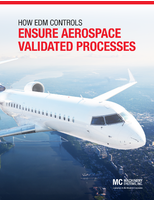Engineering Software automates meshing processes.
Press Release Summary:
For applications where meshing techniques are required for computational analysis of fluid flow, TGrid(TM) v5.0 uses pre-processor to create unstructured tetrahedral and hex-core meshes for complex geometry. Solution addresses front-end underhood thermal management by capturing best practices and automating meshing. Additional tools include surface wrapper method, single surface recovery technique for thermal shields, tetrahedral meshing algorithm, and cavity re-meshing module.
Original Press Release:
TGrid 5.0 Advances Automatic, High-Quality Meshing Tools for Increased Productivity
Release from ANSYS Introduces Key New Technologies in Surface and Volume Meshing
SOUTHPOINTE, Pa., May 9 -- ANSYS, Inc. (NASDAQ:ANSS), a global innovator of simulation software and technologies designed to optimize product development processes, today announced the release of version 5.0 of its TGrid(TM) advanced mesh generation software. TGrid technology is a specialized pre-processor for fluid flow analysis. It is used to create large unstructured tetrahedral and hex-core meshes for complex geometry. The software is utilized heavily in large-scale automotive and aerospace applications, in which advanced meshing techniques are required for the computational analysis of fluid flow. This latest version of TGrid software introduces new tools and enhanced capabilities to generate high-quality meshes more efficiently. In addition, this release exhibits a continued commitment by ANSYS to deliver best-in-class meshing technology.
"This latest release of TGrid software is a prime example of how ANSYS provides the right meshing solution for the right problem," said Brian Drew, vice president at ANSYS, Inc. "Our portfolio comprises a deep and comprehensive suite of meshing technology that supports Simulation Driven Product Development(TM). We intend to continue core technology improvements in order to reduce the meshing bottleneck, producing best-in-class tools designed to address all kinds of applications."
In today's automotive industry, front-end underhood thermal management (UTM) represents one of the most challenging meshing applications. TGrid 5.0 software addresses this by capturing best practices and automating the meshing - once a manual, time-consuming task - required for this class of problems. The surface wrapper method is newly equipped with a revolutionary fully automatic leak/hole detection and fixing algorithm; this eliminates tedious manual cleanup of the often-dirty underhood geometry. A single surface recovery technique for thermal shields is available in TGrid 5.0. Combined with shell conduction models available in FLUENT(R) software, the result is efficient and accurate UTM solutions. The entire underhood wrapper-based meshing process has been encapsulated using journal file capabilities in TGrid for overnight batch execution. Moreover, the user interface now exposes key parameters and automates specific details, such as meshing heat exchanger zones and inserting cylindrical domains for moving reference frames in the fan region. Similar techniques could be used to develop customized wrapper automation for other industry applications.
"We are observing significant productivity improvements on several fronts with TGrid 5.0," said Alexis Scotto d'Apollonia from the vehicle engineering numerical modeling department at PSA Peugeot Citroen. The company deployed TGrid software for automotive external aerodynamics, underhood thermal management and passenger thermal comfort. "Besides overall speed enhancements, we are able to use the wrapper to quickly change parts or full assemblies in engine configurations. The new prism layer technology is avoiding tedious manual surface mesh preparation and decomposition. The gain for end users will be substantial."
With this release, a new tetrahedral meshing algorithm, combining the speed of Delaunay and the quality of an advancing front, has been added to the TGrid meshing arsenal. This new technology in conjunction with an advanced initialization scheme and several quality enhancing tools leads to improved accuracy of the fluid flow analysis. In addition, enhanced prism layer operations now include fully automatic proximity handling to support highly complex geometry. Finally, a new cavity re-meshing module allows users to swiftly replace parts and components without re-meshing the full model.
"The new tetrahedral meshing in TGrid 5.0 is absolutely fantastic: It is the most reliable tetrahedral mesher that I have ever used," said Brian R. Thompson, analyst at the aerodynamics department of Raytheon Missile Systems, which has been beta testing TGrid 5.0 on aerospace applications. "The tool allows me to specify a growth rate and has improved ability to remove highly skewed sliver cells. It produces high-quality smooth tetrahedral meshes every time."
For downloadable images, visit www.ansys.com/newsimages.
About ANSYS, Inc.
ANSYS, Inc., founded in 1970, develops and globally markets engineering simulation software and technologies widely used by engineers and designers across a broad spectrum of industries. The Company focuses on the development of open and flexible solutions that enable users to analyze designs directly on the desktop, providing a common platform for fast, efficient and cost- conscious product development, from design concept to final-stage testing and validation. The Company and its global network of channel partners provide sales, support and training for customers. Headquartered in Canonsburg, Pennsylvania, U.S.A., with more than 40 strategic sales locations throughout the world, ANSYS, Inc. and its subsidiaries employ approximately 1,400 people and distribute ANSYS products through a network of channel partners in over 40 countries. Visit www.ansys.com/ for more information.
ANSYS, ANSYS Workbench, AUTODYN, CFX, FLUENT and any and all ANSYS, Inc. brand, product, service and feature names, logos and slogans are registered trademarks or trademarks of ANSYS, Inc. or its subsidiaries in the United States or other countries. All other brand, product, service and feature names or trademarks are the property of their respective owners.




